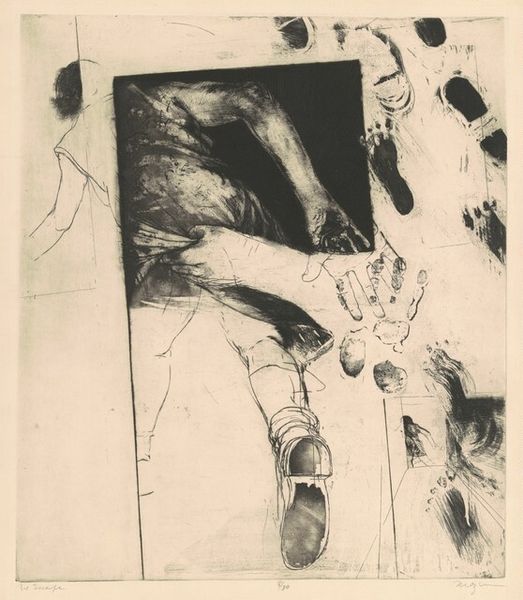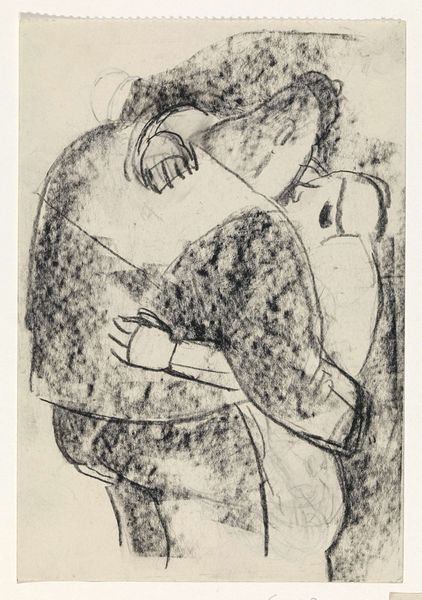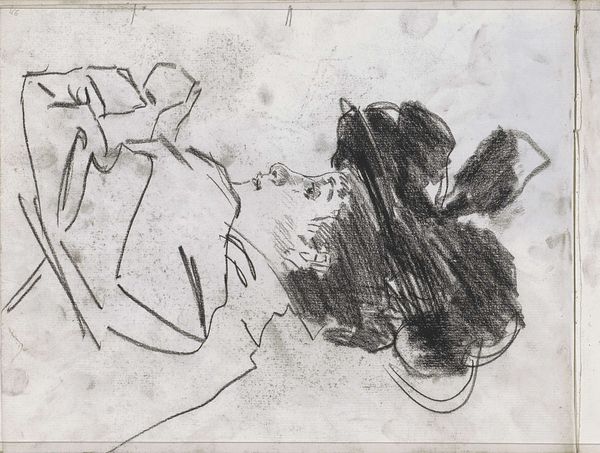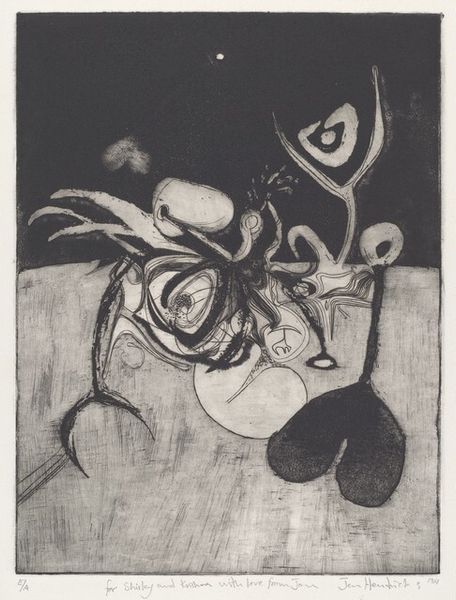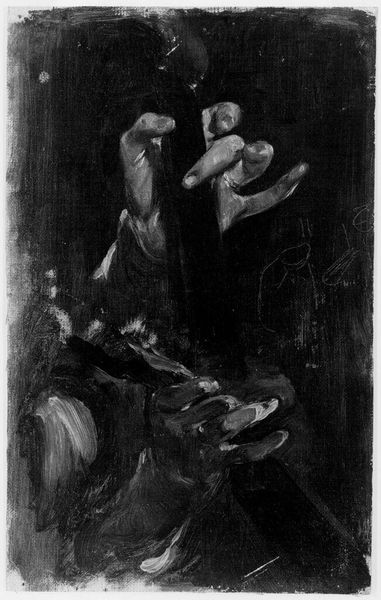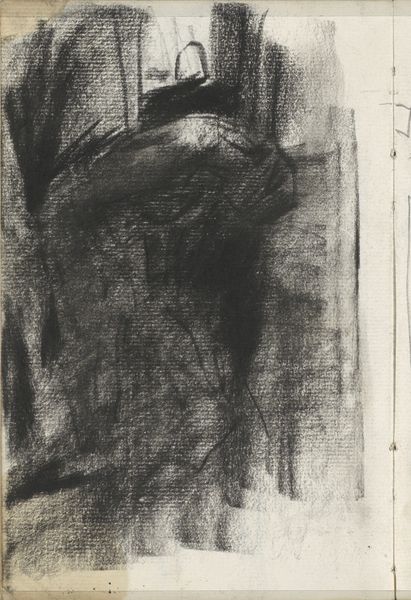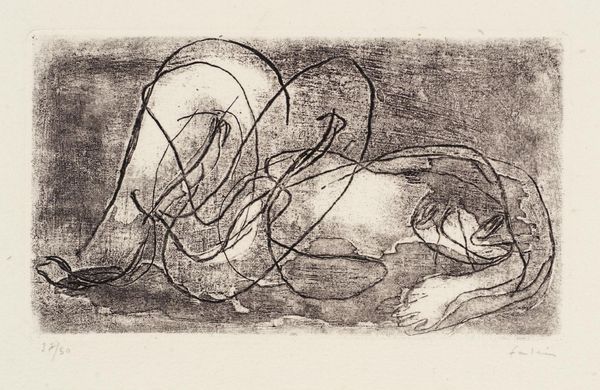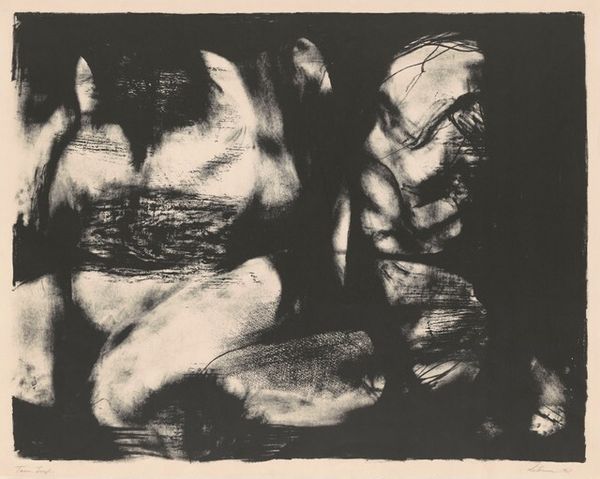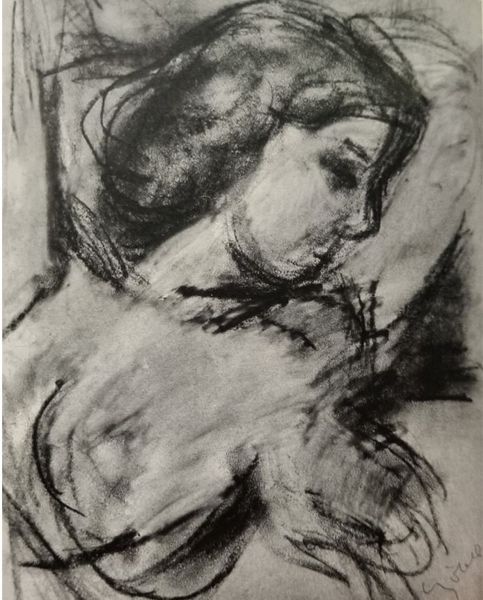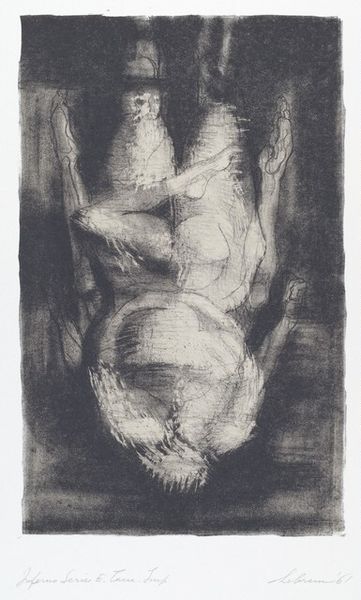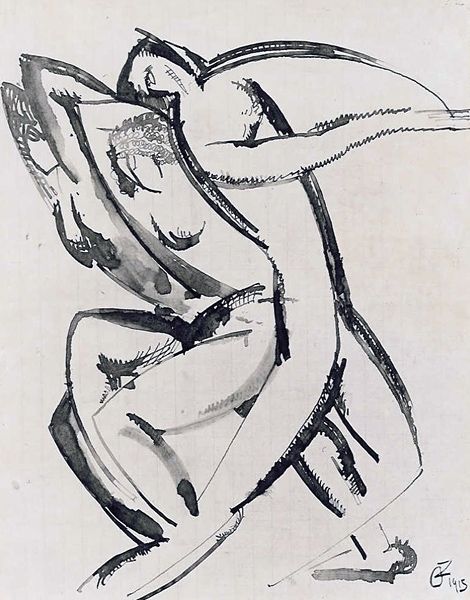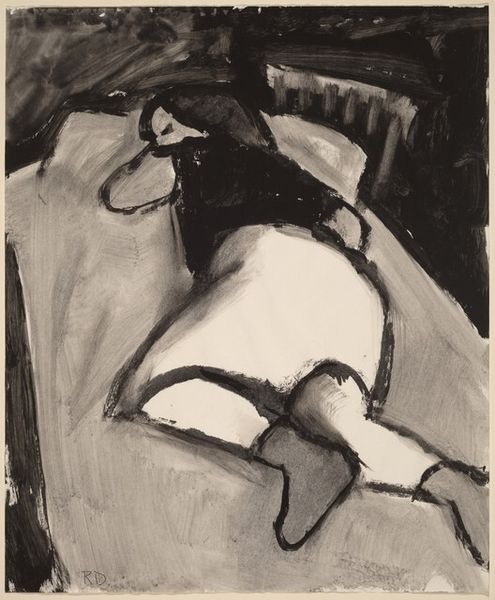
drawing, charcoal
#
portrait
#
drawing
#
cubism
#
charcoal drawing
#
figuration
#
charcoal
#
nude
#
modernism
Copyright: Pablo Picasso,Fair Use
Curator: Looking at "Sleeping man and sitting woman" from 1942, a charcoal drawing by Picasso, I'm immediately struck by the emotional weight it carries. The stark contrast and compressed space evoke a sense of tension and introspection. Editor: The texture is remarkable, especially the way he coaxes volume from such a humble medium. We see this primarily through close consideration of paper type, quality and provenance, including pigment and fixative formulas utilized during its execution, especially crucial given wartime resource restrictions impacting artist production practices across Europe at the time. Curator: Absolutely. It's impossible to ignore the historical context. Europe was engulfed in World War II when this drawing was made, and that sense of unease and anxiety permeates the scene. The sleeping man could be a symbol of vulnerability, while the seated woman exudes a melancholic strength. It makes you wonder if this drawing reflects relationships tested and redefined by historical and social crisis. Editor: Consider also that the availability of artistic supplies shaped form and composition: the use of charcoal on paper demonstrates a direct engagement of basic components under extraordinary conditions – a starkly different method than, say, large-scale oil works with premium raw components under traditional circumstances. This economy of resources resonates with how makers often repurpose available tools, revealing insights not only aesthetically but about working class making strategies that persist outside high-art production locations. Curator: I see how the restriction in tools, supports, and mediums became important factors for an artistic form to communicate its essence within limits. I notice that the composition's fragmentation owes to cubism and, possibly, to societal fractures as well, suggesting individuals segmented from one another. It's a somber commentary on human existence during that era. Editor: Indeed. Ultimately, the material restraints didn’t constrict the meaning conveyed or compromise how materials might affect viewership’s experiences– demonstrating through simple gestures, profound implications from socioeconomic conditions affecting creative output worldwide. Curator: It's a potent reminder of how social forces—and individual vulnerabilities—can filter through something seemingly as straightforward as a domestic scene drawn with charcoal. Editor: Absolutely, recognizing how such economic forces impacted aesthetic decisions further enriches our interpretation of both its meaning and its materiality.
Comments
No comments
Be the first to comment and join the conversation on the ultimate creative platform.
